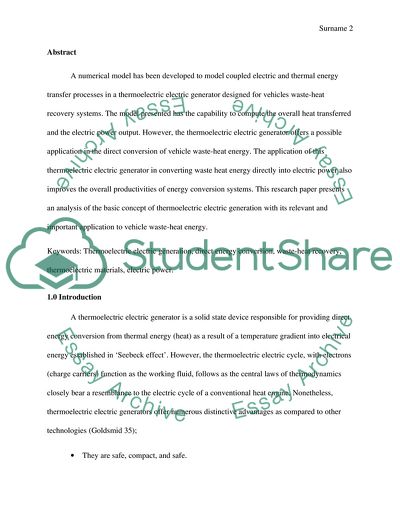Cite this document
(Waste Heat from Exhaust Gases Generated from Automobiles Applications Coursework Example | Topics and Well Written Essays - 3000 words, n.d.)
Waste Heat from Exhaust Gases Generated from Automobiles Applications Coursework Example | Topics and Well Written Essays - 3000 words. https://studentshare.org/design-technology/1865723-design-of-a-thermoelectric-electric-generator-using-vehicle-exhaust-waste-heat
Waste Heat from Exhaust Gases Generated from Automobiles Applications Coursework Example | Topics and Well Written Essays - 3000 words. https://studentshare.org/design-technology/1865723-design-of-a-thermoelectric-electric-generator-using-vehicle-exhaust-waste-heat
(Waste Heat from Exhaust Gases Generated from Automobiles Applications Coursework Example | Topics and Well Written Essays - 3000 Words)
Waste Heat from Exhaust Gases Generated from Automobiles Applications Coursework Example | Topics and Well Written Essays - 3000 Words. https://studentshare.org/design-technology/1865723-design-of-a-thermoelectric-electric-generator-using-vehicle-exhaust-waste-heat.
Waste Heat from Exhaust Gases Generated from Automobiles Applications Coursework Example | Topics and Well Written Essays - 3000 Words. https://studentshare.org/design-technology/1865723-design-of-a-thermoelectric-electric-generator-using-vehicle-exhaust-waste-heat.
“Waste Heat from Exhaust Gases Generated from Automobiles Applications Coursework Example | Topics and Well Written Essays - 3000 Words”. https://studentshare.org/design-technology/1865723-design-of-a-thermoelectric-electric-generator-using-vehicle-exhaust-waste-heat.


